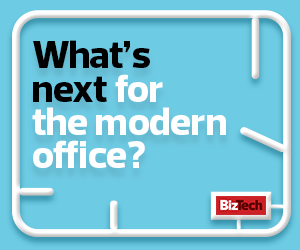With Occupancy Tracking, Workplaces Can Make Headcounts Safely
Companies will continue to invest in communication platforms beyond the pandemic to connect people working in the office with those working at home, according to Rasmus. One such platform, Cisco Webex, incorporates tools to track the number of people in a conference room, he notes.
Webex delivers historical data on the number of people occupying a room. The new Workspaces tab in Cisco’s Control Hub lets IT departments, facilities and HR collaborate on managing these spaces, providing alerts on capacity limits to help with social distancing. In addition, digital signage solutions such as Philips’s PeopleCount technology can display an indicator similar to a traffic light to let people know whether a space is safe to enter.
Some systems use surveillance cameras with video analytics software to detect people coming in and out and can provide a count to track occupancy, even tracking the number of people walking in and out of multiple doors to help maintain social distancing.
Contact Tracing Tools Help Employers Track Exposed Workers
Keeping track of people who have been exposed to COVID-19 will be important for managing onsite employees as they return to the workplace. Thermal screening solutions can scan workers to see who has a temperature above a normal range, and thermographic camera systems can monitor heat coming from the skin. Companies can mount these devices on a wall or ceiling, place them on a mobile cart or tripod, or install them in a kiosk. When employees get sick, companies will need to use contact tracing tools, such as Zebra MotionWorks Proximity, to track whom in the office an infected employee has come in contact with.
Dashboards let companies monitor proximity events and receive reports on who may have been near an employee who tests positive for COVID-19. These solutions display “hot zones” of infection. Several apps, such as New York State’s COVID Alert NY, can alert people if they have encountered an infected individual. COVID Alert NY uses a Bluetooth sensor to identify people who have come within 6 feet of the infected person and also use the app.
MORE FROM BIZTECH: How to build company culture in a hybrid work environment.
Companies Use Sanitizing Tech to Keep Opened Workspaces Safe
Surfaces around the office can be sanitized with devices such as the HamiltonBuhl HygenX Vray wand, which uses ultraviolet light, says Eva Boker Lancaster, president of HamiltonBuhl. For example, before the pandemic, time clocks were likely wiped about once a day, Boker Lancaster notes. “Now we should really be wiping after each use, and to be 100 percent secure, it should be UVC-sanitized often,” she says.
In a hybrid work environment that involves desk hoteling, people will share even more equipment. UVC light can sanitize mice, keyboards, headsets, phones and whiteboards.
Boker Lancaster’s team at HamiltonBuhl had been working out of their offices in New Jersey in an open bullpen before the pandemic. But now, except for warehouse employees, they are working from home. If they come back to the office, she sees the company implementing more of a cubicle setup with partitions.
Going forward, Boker Lancaster is more concerned about productivity than physical location.
“It’s going to be very interesting to see what happens and how it all plays out,” she says. “But for the time being, I'm the kind of a manager who believes it’s less important where you’re doing your job as long as you are definitely getting your job done.”
The urgency of using technology for contact tracing and sanitizing may ease as the COVID-19 pandemic ebbs, but occupancy tracking could be used long term because buildings will always have capacity limits of some kind. In the meantime, sanitizing tech and contact tracing tools can make onsite employees more comfortable and help maintain productivity.











